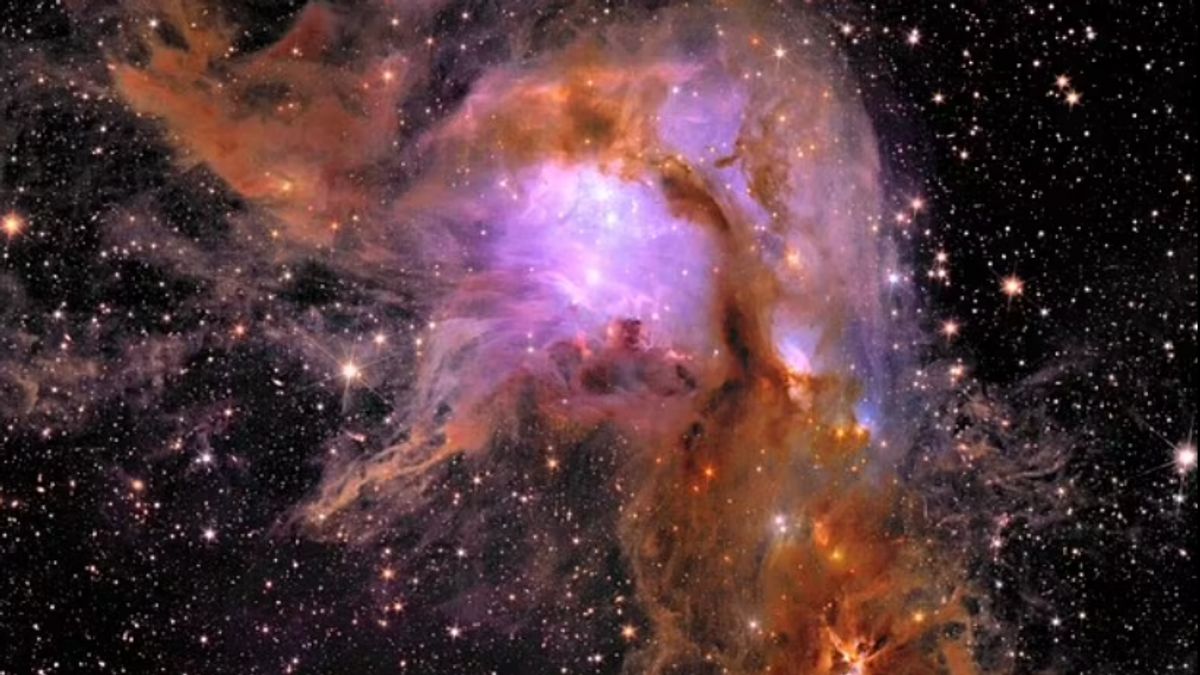JAKARTA- Amazing new photos of the European Space Agency's (ESA) Euclidean ride show the image of the largest cosmos ever taken. The British-backed spacecraft, launched from Florida last summer, returned five new photos of its position about one million miles from Earth.
Among these photos is an image of a spiral galaxy 30 million light-years away that looks like our Milky Way galaxy and clouds of gas and dust shaped like beautifulferts.
There is also a distant 'galaxy group' - some of the galaxies bound by gravity - were captured in 'extraordinating' detail thanks to the vehicle's infrared sensor.
This second photoset comes six months after Euclid returned the first full-colored image of the cosmos. This new collection includes nebulae (left), spiral galaxies that look like the Milky Way (upright), and galaxy clusters (low rights).
The most striking is an image of a nebula called Messier 78, which is located about 1,600 light years from Earth. The nebula is a massive cloud of dust and gas that fills the space between stars and serves as a new star's 'factories'. The nebula is described as a colorful'star factory' with a shape similar to a cult.
NGC 6744 is a spiral galaxy about 30 million light-years away in the constellation Pavo, also known as Merak. The'strengthening' detail is seen in this new galaxy's image, including the plume-like dust trail that appears as the 'taji' of the spiral arms.
Abell 2390 is a large group of galaxies that are 2.7 billion light years from Earth. Clusters of galaxies are the largest objects in the universe that are bound by their own gravity and contain hundreds or thousands of galaxies, hot plasmas, and a lot of dark matter.
Another galaxy cluster called Abell 2764 is seen at the top right of this fourth image, seen with a strange collection of integers and lonjongs. Also seen in this new image is a bright foreground star in our own Galaxy, called V*BP-Phoenicis.
The Dorado group is another galaxy cluster, which collectively spans more than 1,000 light-years in the far southern sky. The association of galaxies has various shapes and sizes, from spirals to flat and disk-shaped.
Euclid is placed in L2, the'second Lagrange Point' in space - the position in the space between Earth and the sun where objects sent there tend to stay on site. The Euclidean mission is to better understand the two mysterious components that form 95 percent of the dark matter and dark energy' universe.
SEE ALSO:
Dark matter, which does not reflect or emit light, binds galaxies together to create environments for stars, planets and life. Meanwhile, dark energy is a mysterious phenomenon that drives galaxies away from each other and causes the expansion of the universe to accelerate.
Scientists hope Euclidean will answer two main questions what are the fundamental laws of physics of the universe and how the universe originated and was made of. Britain has donated 37 million pounds to this 850 million-pound mission, where scientists played an important role in designing and building the vehicle and leading one of the two scientific instruments in it.
With this contribution, the Euclidean mission will open a deeper veil on the mysteries of the cosmos and how the structure of the universe formed throughout cosmic history.
The English, Chinese, Japanese, Arabic, and French versions are automatically generated by the AI. So there may still be inaccuracies in translating, please always see Indonesian as our main language. (system supported by DigitalSiber.id)


















